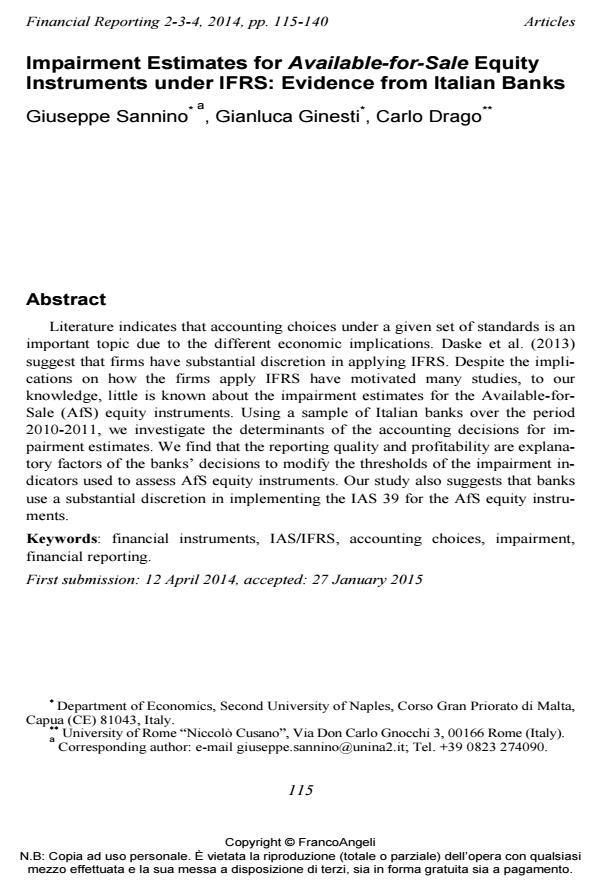Impairment estimates for available-for-sale equity instruments under IFRS: evidence from italian Banks
Titolo Rivista FINANCIAL REPORTING
Autori/Curatori Giuseppe Sannino, Gianluca Ginesti, Carlo Drago
Anno di pubblicazione 2015 Fascicolo 2014/2-3-4
Lingua Inglese Numero pagine 26 P. 115-140 Dimensione file 301 KB
DOI 10.3280/FR2014-002005
Il DOI è il codice a barre della proprietà intellettuale: per saperne di più
clicca qui
Qui sotto puoi vedere in anteprima la prima pagina di questo articolo.
Se questo articolo ti interessa, lo puoi acquistare (e scaricare in formato pdf) seguendo le facili indicazioni per acquistare il download credit. Acquista Download Credits per scaricare questo Articolo in formato PDF

FrancoAngeli è membro della Publishers International Linking Association, Inc (PILA)associazione indipendente e non profit per facilitare (attraverso i servizi tecnologici implementati da CrossRef.org) l’accesso degli studiosi ai contenuti digitali nelle pubblicazioni professionali e scientifiche
Literature indicates that accounting choices under a given set of standards is an important topic due to the different economic implications. Daske et al. (2013) suggest that firms have substantial discretion in applying IFRS. Despite the implications on how the firms apply IFRS have motivated many studies, to our knowledge, little is known about the impairment estimates for the Available-for- Sale (AfS) equity instruments. Using a sample of Italian banks over the period 2010-2011, we investigate the determinants of the accounting decisions for impairment estimates. We find that the reporting quality and profitability are explanatory factors of the banks’ decisions to modify the thresholds of the impairment indicators used to assess AfS equity instruments. Our study also suggests that banks use a substantial discretion in implementing the IAS 39 for the AfS equity instruments.
Parole chiave:Financial instruments, IAS/IFRS, accounting choices, impairment, financial reporting.
- Why Do Firms Write Off Their Goodwill? A Comparison of Different Accounting Systems Francesco Avallone, Claudia Gabbioneta, Paola Ramassa, Marco Sorrentino, in FINANCIAL REPORTING 1/2015 pp.23
DOI: 10.3280/FR2015-001002
Giuseppe Sannino, Gianluca Ginesti, Carlo Drago, Impairment estimates for available-for-sale equity instruments under IFRS: evidence from italian Banks in "FINANCIAL REPORTING" 2-3-4/2014, pp 115-140, DOI: 10.3280/FR2014-002005